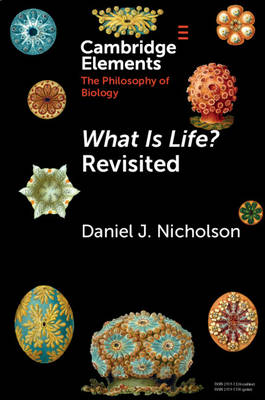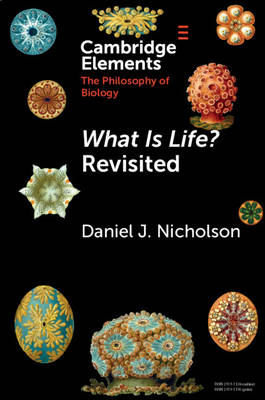
- Afhalen na 1 uur in een winkel met voorraad
- Gratis thuislevering in België vanaf € 30
- Ruim aanbod met 7 miljoen producten
- Afhalen na 1 uur in een winkel met voorraad
- Gratis thuislevering in België vanaf € 30
- Ruim aanbod met 7 miljoen producten
Zoeken
Omschrijving
Erwin Schrödinger's What Is Life? is one of the most celebrated scientific works of the twentieth century. However, like most classics, it is far more often cited than read. Efforts to seriously engage with Schrödinger's arguments are rare. This Element explores how well his ideas have stood the test of time. It argues that Schrödinger's emphasis on the rigidity and specificity of the hereditary material (which stemmed from his attempt to explain biological order from physical principles) influenced how molecular biologists conceptualized macromolecules, resulting in a deterministic, engineering view of the cell that is still popular today--even if it is increasingly at odds with experimental findings. Drawing on archival sources, this Element also uncovers Schrödinger's motivations in writing What Is Life? and suggests that his biological proposals are best understood in the context of his longstanding dispute with other physicists regarding the interpretation and extension of quantum mechanics.
Specificaties
Betrokkenen
- Auteur(s):
- Uitgeverij:
Inhoud
- Aantal bladzijden:
- 75
- Taal:
- Engels
- Reeks:
Eigenschappen
- Productcode (EAN):
- 9781009124188
- Verschijningsdatum:
- 30/11/2025
- Uitvoering:
- Paperback
- Formaat:
- Trade paperback (VS)
- Gewicht:
- 25 g

Alleen bij Standaard Boekhandel
+ 48 punten op je klantenkaart van Standaard Boekhandel
Beoordelingen
We publiceren alleen reviews die voldoen aan de voorwaarden voor reviews. Bekijk onze voorwaarden voor reviews.








